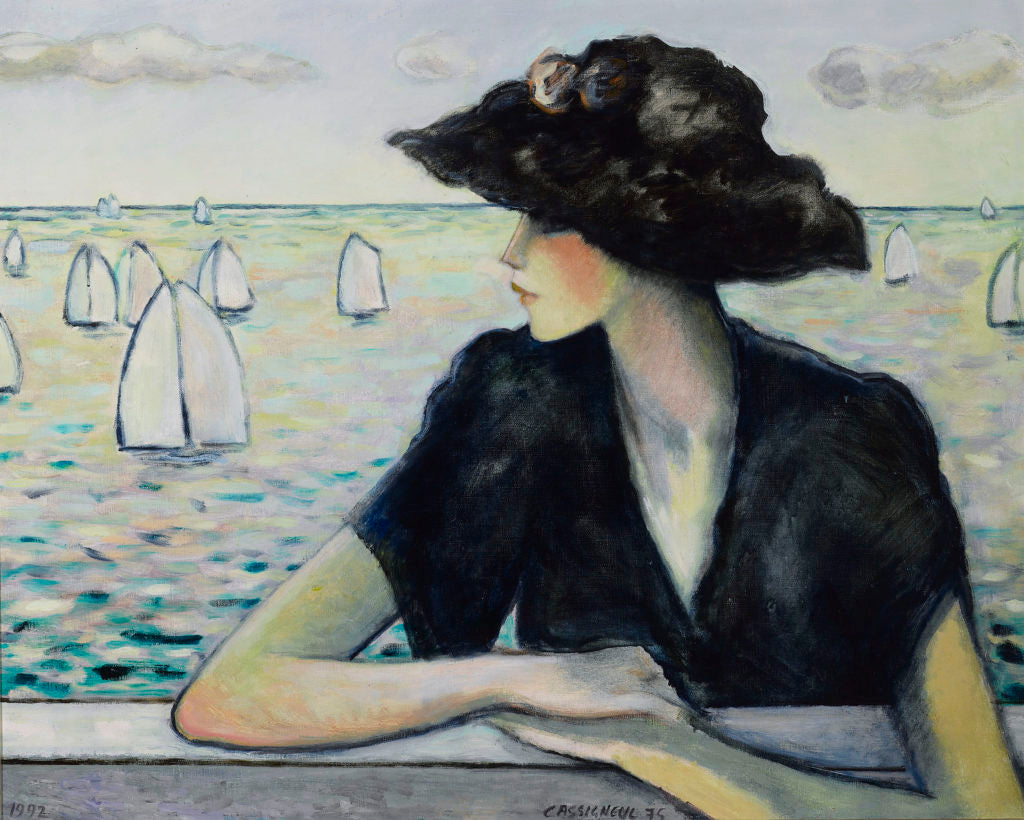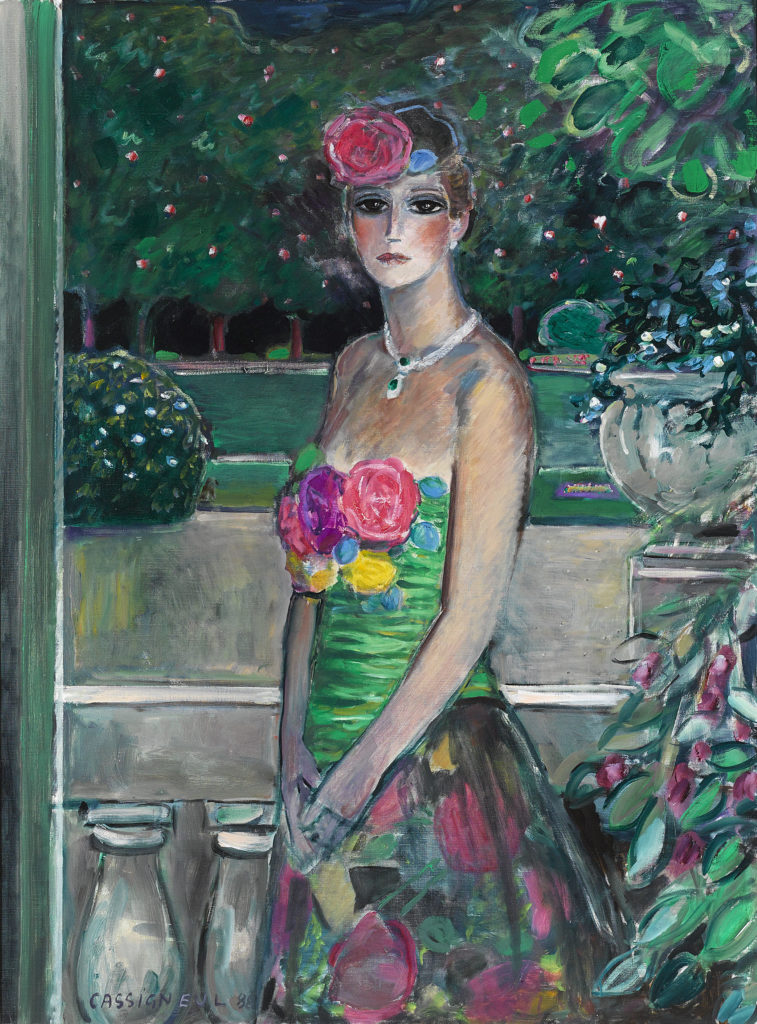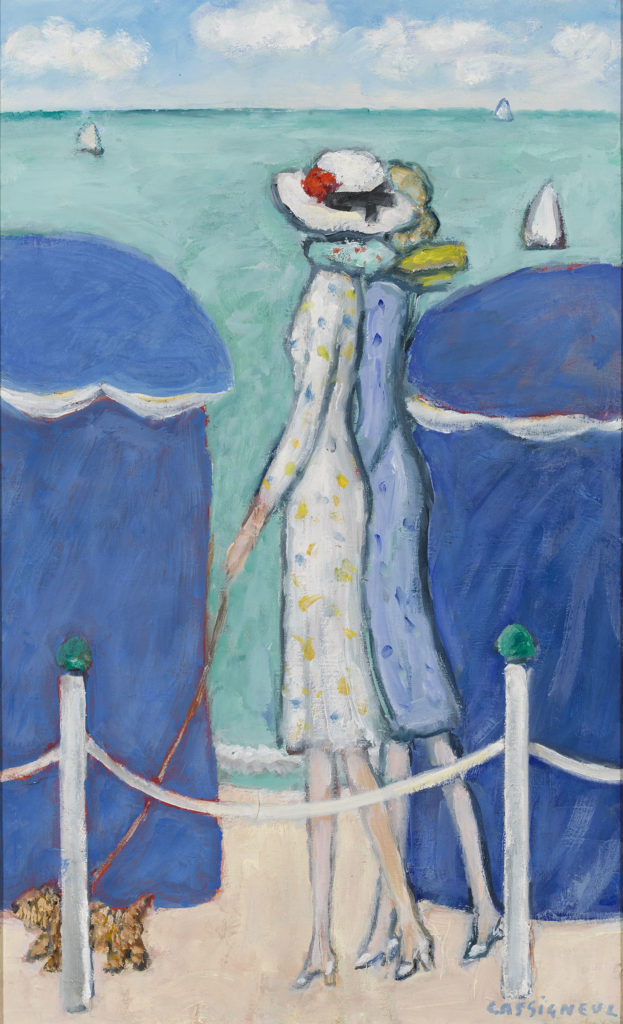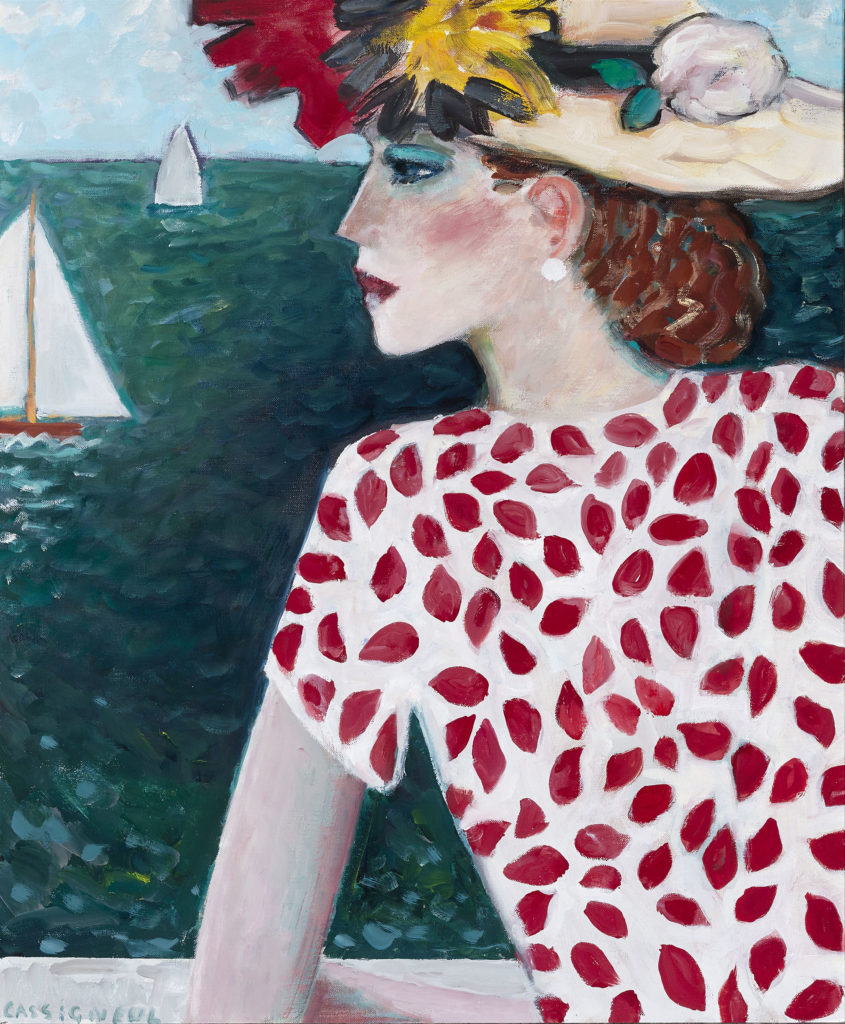Jean-Pierre Cassigneul stands among the greatest living French artists of the contemporary age, and his canvases reflect his own unique experiences of his time and place. His vibrantly colored oeuvre is a testament to his unflinching originality and highly personal style, displaying his unique fusion of French haute couture with traditional portraiture.
Early Life
If ever an artist was born into the ideal family, it was Jean-Pierre Cassigneul. His grandfather was the founder of the ground-breaking French fashion house Jean Dessès, and his father had already taken over ownership by the time Cassigneul was born in 1935. Raised among the glamor and excitement of the Parisian fashion world, the young Cassigneul observed models and dressmakers and runway shows from a very young age. It is little wonder that the boy would grow into an artist so devoted to the elegance and refinement of the fashionable Parisian woman.

Le Soir by Jean-Pierre Cassigneul
He picked up the paintbrush at a young age, producing his first landscapes of Deauville in 1947 at just 12 years old. Five years later, he held his first one-man exhibition at the young age of 17 and later entered the Academie Charpentier. He was, however, discouraged by the school's approach, which strictly focused on geometry, perspective and formal art theory. Thus, after only one year, he left the Academie Charpentier to study at a small art school situated on Paris' right back.

Après-Midi d'Été by Jean-Pierre Cassigneul
Guiding Influences
His new mentor, Jean Souverbie, was a stage designer and the head of the monumental art studio at the École des Beaux-Arts in Paris. It was Souverbie who introduced Cassigneul to Picasso and Les Nabis, the latter of whom would have a significant effect on the development of his style.
Emerging in the early 20th century, Les Nabis were still considered fashionable when Cassigneul was coming of age. The Post-Impressionist group included artists such as Pierre Gauguin, Pierre Bonnard, Edouard Vuillard and Maurice Denis, all of whom sought to free form and color from traditional artistic tropes. The result was a style that celebrated avant-garde color palettes and flat spatial compositions - both of which are seen in Cassigneul's mature output.

The Emerald Necklace by Jean-Pierre Cassigneul
Rising Star
Between 1956 and 1960, Jean-Pierre Cassigneul apprenticed at the studio of Roger Chapelain-Midy, a well-known painter and theatre designer. During this period, he held numerous exhibitions throughout Paris and was appointed a member of the Salon d’Automne in 1959. In 1963, he exhibited his works at the Salon de la Jeune Peinture, where his figural portraits stood out amongst the abstract work of his contemporaries, and earned both critical and popular acclaim.
By this time, the whole of Cassigneul's output was dominated by women. His sleepy-eyed beauties are both enigmatic and glamorous, full of air and lightness while exuding a distinctly French spirit. Vibrant colors and striking brushwork lend his work its contemporary feel, while his feminine subjects are a classic trope from art history.

Après l'Orage by Jean-Pierre Cassigneul
Occasionally producing landscapes and seascapes, the artist always instilled a feminine element into each composition. Almost always, however, his female subject dominated the canvas, with secondary themes of flowers, yachts, parks and pets periodically appearing to add a friendly touch to the scene. Simultaneously modern and timeless, his portraits transcend both time and popular trends - as an artist, Cassigneul is unwavering in his dedication to elegance.

September by Jean-Pierre Cassigneul
Continued Success
By 1968, Cassigneul's works were being exhibited on both sides of the Atlantic - and beyond. They gained particular favor in Japan, where he enjoys an especially devoted following. His success and influence only continue to grow. While he is now in his 80s, he continues to paint and exhibit works around the world. He has also illustrated several books, among them Le Tour de Malheur by Joseph Kessel. His painting In the Rose Garden recently brought $893,000 at a 2014 Sotheby’s auction, ranking him among the five best-selling living French artists today.







